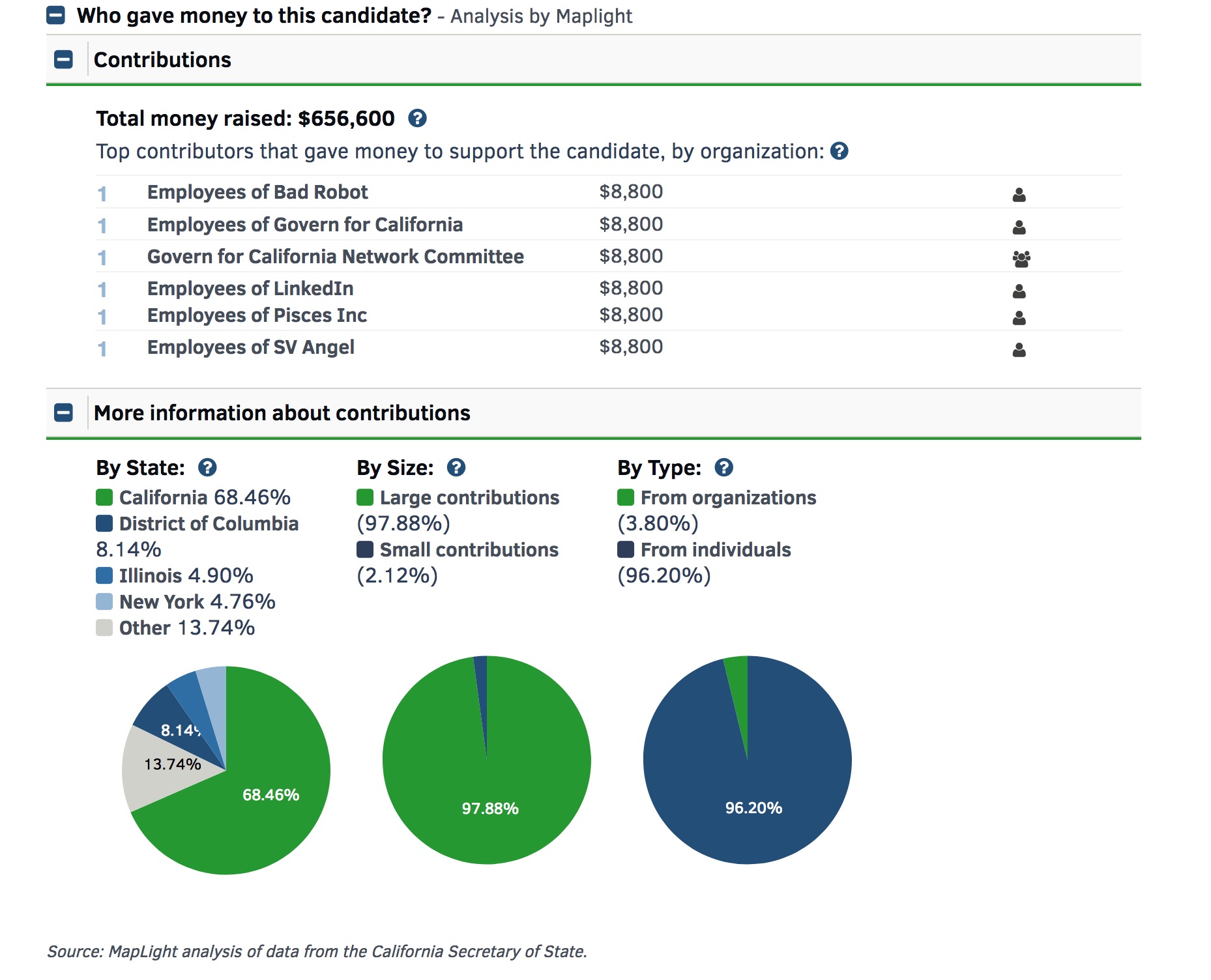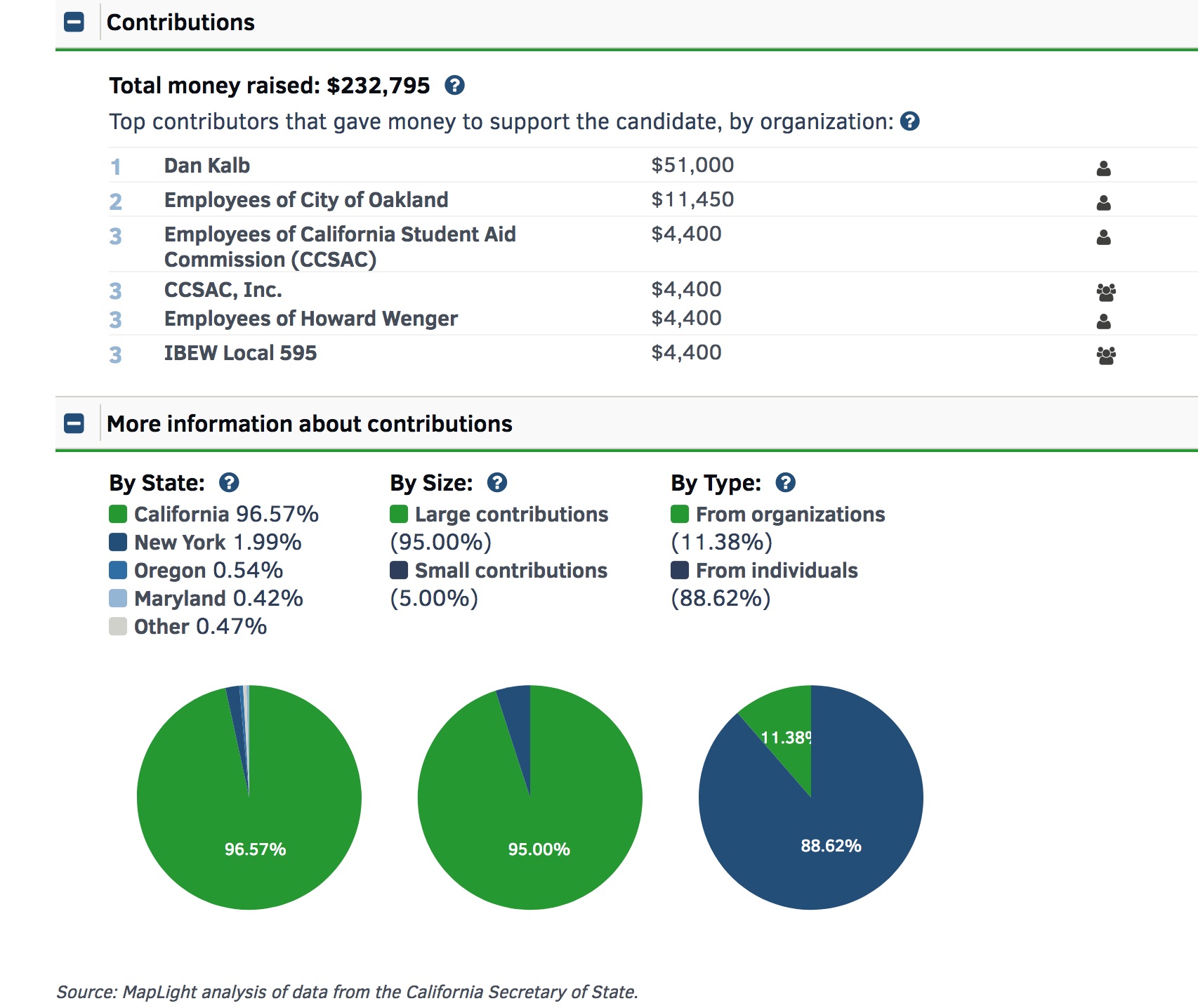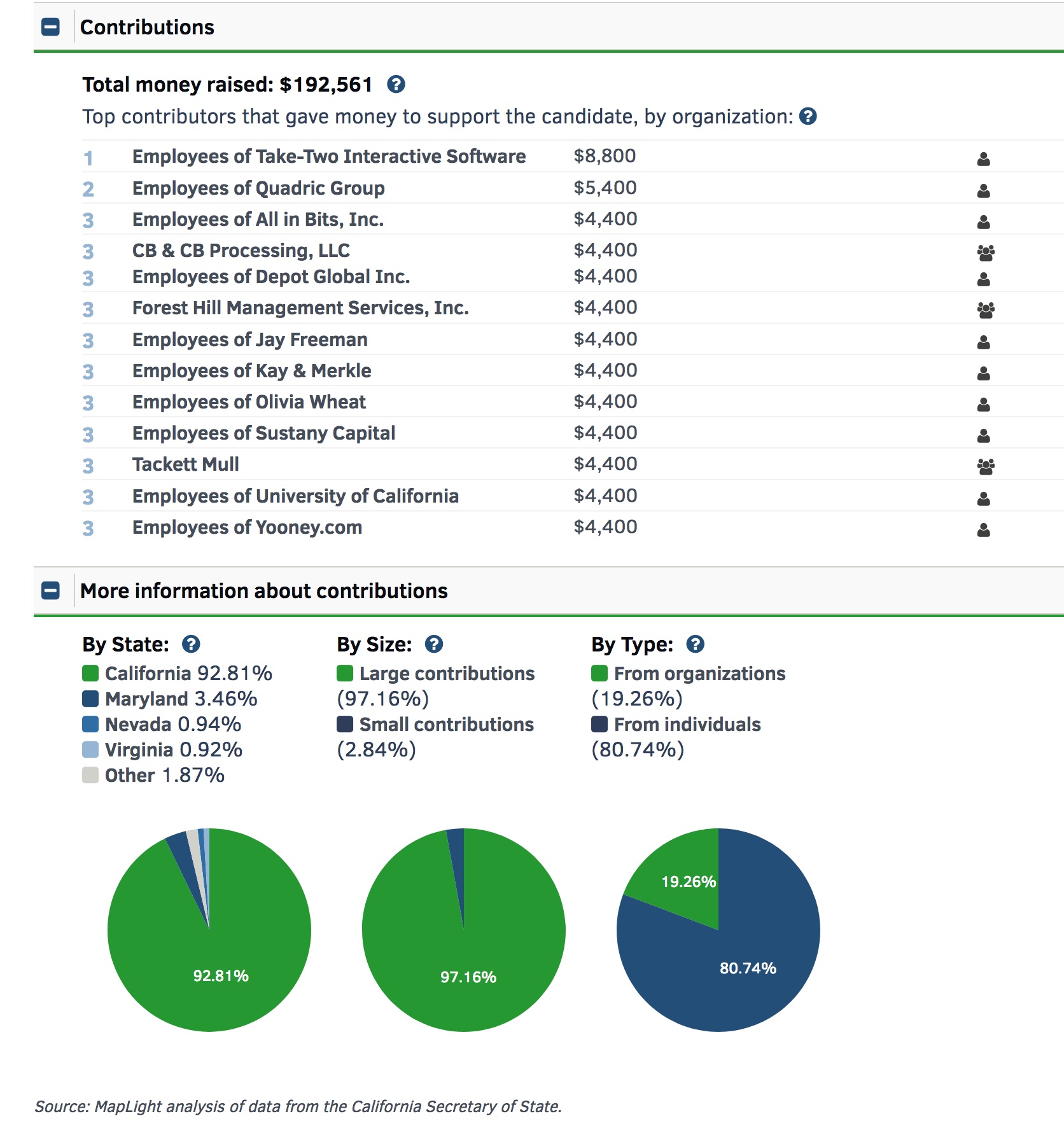So, having gotten past my preliminary rant, what are my thoughts on the contests and candidates?
The Presidency
Let’s start at the top – with the Presidency. Everyone knows that the main party candidates will be Biden for the Democrats and Trump for the Republican. Maybe you’re happy with those choices, and maybe you’re not, but it doesn’t really matter. Nor, here in California, does it really matter who you vote for. Given California’s overwhelmingly Democratic registration (although No Party Preference runs fairly close behind the lagging Republicans, and Democrats are still not a majority of voters), Biden will certainly carry the state, both now and in November. Consequently, for better or for worse, presidential campaigning in California won’t be for votes, but for money. The good news is that, since it won’t matter, you can vote for whomever you want, as long as they’re on your ballot.
U.S. Senator
The first contest on the March ballot that does matter is U.S. Senator. There are actually two elections for that office – one for the unfinished term of Diane Feinstein and the other for the new term of that seat, starting in January. The main candidates are the same for both. Under California’s “top-two” system, everyone get to vote for any candidate, regardless of party, and the top two will fight it out in November.
There’s only one significant Republican candidate – Steve Garvey – a retired major league baseball player. What are his qualifications? 1. He’s well-known, 2. He’s a republican, 3. He claims to have a brain in his head.
How about the Democrats? There are three major candidates. All three currently represent parts of California in the U.S. House of Representatives. They are: Barbara Lee, Katie Porter, and Adam Schiff.
Adam Schiff is best know for having headed up the committee that recommended impeaching Donald Trump. He’s generally been a reliable vote for Democratic leadership measures. As a state senator in the 1990s, he authored several “tough on crime” bills (which was not unusual for Democrats at that time), but none were enacted.
Barbara Lee has represented the East Bay’s Twelfth Congressional District since the 1990s, when she replaced her mentor, Ron Dellums after his retirement. She’s been a stalwart “Progressive” and holds the distinction of having been the only member of Congress to vote against the authorization for military intervention after 9-11, which led to the invasions of Afghanistan and Iraq. Currently, she has opposed Israel’s invasion of Gaza as an overreaction to the Hamas attack of October 7th, and supported a resolution calling for an immediate ceasefire.
Katie Porter is generally considered more liberal than Schiff but not a strong “Progressive” like Lee. she has developed a reputation as a “muckraker” in Congress, conducting sharp questioning of corporate banking officials and members of the Trump Administration, including the then-head of the Center for Disease Control and the Postmaster General.
Right now, polls show Schiff in the lead. (He has by far the most campaign funds of any candidate.) He’s followed by Garvey and Porter, running neck-and-neck, with Lee running somewhat behind the other three. Under the “top-two” system, Schiff will undoubtedly be on the ballot in November, but it’s unclear who the other contestant will be. If it’s Garvey, Schiff will almost certainly win in November. If it’s another Democrat, the answer is less clear.
If you’re happy with Schiff, by all means vote for him. If you’d prefer Lee or Porter, you might want to wait until the last polls come out showing who’s likely to come in second. Then, your vote might help make the difference whether that’s Garvey or another Democrat. zin that case, vote for that other Democrat.
House of Representatives – 12th District
This has been Barbara Lee’s seat for more than twenty years. It’s now an “open seat” with nine candidates running. There are two Republicans: Ned Nuerge and Steve Slauson. Given the District’s strong Democratic registration, they can be ignored.
Among the Democrats (there are no third party candidates), NONE have prior legislative experience at the state level. Only two have even held elective office: Tony Daysog – Alameda City Councilmember and Lateefah Simon – BART Board of Directors.
IMHO, ANY of the candidates will be out of their depth as a Congressmember in Washington! It’s interesting that, despite her lack of experience, Simon has racked up a slew of endorsements from prominent California Democrats, when BART has not impressed anybody with how it’s been run over the past few years. The endorsements, to my mind, just reflect the ability of someone tied in with the Democratic political establishment to pull strings and call in past favors. Nor do the policy positions of any of the candidates show the depth of thought or analysis one would want to see in someone who’d be representing us in the U.S. House.
Tony Daysog does at least have significant local government experience, and his policy proposals weren’t totally off the wall. Maybe vote for him and hope for better choices in two years???
State Senate – 77th Senate District
This has been Nancy Skinner’s seat for a long time, but she is finally termed out, and there are six candidates running to replace her. One of them, Jeanne Solnordal, is a Republican. [What kind of masochist do you have to be, as a Republican, to run for a seat where the voters are overwhelmingly Democrats?] There are also five Democratic candidates, and each of them has as good or better credentials than the candidates for the 12th District House seat!
The Democratic candidates are: (in alphabetical order) Jesse Arreguin, Jovanka Beckles, Dan Kalb, Kathryn Lybarger, and Sandre Swanson. All of the Democrats have support from one or more labor organizations, as well as other political groups. Lybarger is the President of the California Labor Federation. All the others are current or former local elected officials, and Swanson represented the 16th State Assembly District for three terms (2006-2012). Support from organized labor can be a mixed bag. Unions can provide both money and feet on the ground for a campaign, and since many voters in this district are union member or sympathizers, labor endorsements help win votes – and elections. However, organized labor is also a powerful lobbying force in the Legislature. One must be concerned to what extent a senator will reflect the wishes of his/her constituents versus those of union lobbyists. For example, Sen. Scott Wiener often includes in his affordable housing bill a provision requiring the use of union construction workers. Yes, this guarantees well-paying jobs, but it also may increase the cost of the housing being built, and can sometimes slow construction. There are trade-offs, and these show in the candidates’ answers to policy questions. (Labor support can also draw fire from anti-labor forces. For example, Lybarger has been targeted by numerous “independent expenditure” smear pieces paid for in large part by the California Building Industry Association (CalBIA). CalBIA is made up of for-profit developers, who don’t like being forced to use union labor because of legislators like Wiener.)
Lybarger wants to raise wages and increase union access and enforcement of labor laws. Won’t these raise the cost of new housing? Arreguin and Lybarger promote government owned and managed housing. What will be the cost of that new bureacracy, and will it lead to graft and corruption, as happened with redevelopement agencies (which Swanson wants to re-establish)?
On other issues, of the five, only Swanson wants to rescind Prop. 47. That 2014 initiative law reduced some crimes from felonies to misdemeanors, with the aim of reducing incarceration costs and investing the savings in programs to divert potential criminals from that pathway. Arreguin supports Gov. Newsom’s plan to restore felony status to some crimes that have attracted crime rings. The other three candidates feel that Prop 47’s aims of rehabilitation and diversion need more time to show results.
There are no “bad” candidates here (and in fact I’ve supported several of the candidates in the past). Of the five, I’d say Kalb is my favorite, but I also like some of Swanson’s and Beckles’ ideas. I fear that Lybarger is more focused on supporting unions than the interests of her district and the state as a whole. As for Arreguin, I’m troubled by the degree to which he has bought into the ideas put out by the YIMBIES and for-profit developers; notably their claim that “all housing is good housing.” The data compiled by the state’s own Department of Housing and Community Development shows that, despite all the bills pushed through the Legislature by YIMBY supporters since 2018, we’re still building far too little affordable housing, but producing a huge overabundance of market-rate housing. Much of that new market rate housing sits vacant, while being used as an investment vehicle for off-shore speculators.
State Assembly – District 14
This race is far more straightforward than many others. There are only three candidates: Utkarsh Jain, a Republican, Buffy Wicks, the Democratic incumbent, and Margot Smith, a Democratic challenger.
Let’s ignore the Republican. (No Republican has been elected to this district for many, many years.) This would be Buffy Wicks’ fourth two-year term. She has aligned herself strongly with the pro-YIMBY group of legislators led by Scott Wiener and Nancy Skinner. That group has pushed through a series of laws that override local control of zoning to promote taller and denser housing in urban areas. She has also supported Sen. Skinner’s efforts to strengthen the “Housing Accountability Act.” That law punishes local municipalities for turning down a housing project containing affordable units unless the municipality can show certain specific strong reasons for rejecting the project. With its latest modifications, the Housing Accountability Act has been “weaponized” for developers as a way to threaten municipalities unless their projects are rapidly approved. As noted, these bills haven’t changed the deficit in affordable housing or the superabundance of market rate housing in Oakland, the Bay Area, or California. They have given for-profit developers some hefty profits.
Margot Smith, Wicks’ Democratic opponent, is running on a platform with several planks: 1) promote more affordable housing, with local control; 2) reform Pro. 13 so business properties get assessed at their real values; 3) provide affordable healthcare; 4) strengthen environmental laws to address climate change and related issues. Her answers to a questionnaire from Ballotpedia (and an associated video) can be found here.
I strongly support Dr. Smith’s candidacy.
Alameda County Supervisor – District 5
Moving on to the local races, we have county supervisor for District 5. This seat opened up by surprise when long-time supervisor Keith Carson (who, like Barbara Lee, used to work for Ron Dellums) announced he would not seek re-election. Nine candidates hurriedly rushed in to file and fill the gap. (Note – The County, unlike the City of Oakland, doesn’t used ranked choice voting [that’s why there are no city offices on this ballot; they’ll all be decided in November].) Here they are:
Greg Hodge, John Bauters, Nikki Fortunato Bas, Ben Bartlett, Ken Berrick, Omar Farmer (since withdrawn, but still on the ballot), Lorrel Plimier, Gerald Pechenuk, and Chris Moore.
The first four are current or former elected officials. The other Five have held no elected office. Of the eight active candidates, seven are Democrats and one (Pechenuk) is Republican [in a campaign photo, he’s shown wearing a Trump baseball cap]. Another differentiation is their attitude towards the campaign to recall the County’s District Attorney, Pamela Price, who was elected in 2022 on a platform of reform and restorative justice. Hodge, Bas, Bartlett and Plimier are opposed to the recall. Berrick and Bauters are noncommital, saying the process will play itself out, while Pechernuk and Moore support the recall. (Pechenuk supports the recall of both Price and Oakland Mayor Sheng Thao. Moore has been a leader of the Price recall campaign.)
The candidates’ attitudes on drugs and crime also differ widely. Perhaps predictably, both Moore and Pechenuk take a hard line on crime and drugs. Pechenuk blames Oakland’s crime problems on the import of drugs from Mexico and Latin America. He would try to revitalize the war on drugs. Moore is a landlord and serves on the board of the East Bay Rental Housing Assn.
The other six candidates all believe that the issues of crime, drug use, homelessness and mental health are all linked and require a holistic solution that may, to some extent, involve the police, but would better be dealt with through a combination of social services and education.
As can be seen, several of the candidates advocate for similar programs to address county issues. The issue then becomes which have best demonstrated being able to “walk the walk” as well as talk the talk. As Oakland City Council President, Bas has been in a position to execute policies, and seems to have done so with some success. On that basis, she’s getting my vote, although Greg Hodge is also impressive and gets points from me for acknowledging that, though the YIMBIES may have good intentions, their efforts have resulted in building far more market-rate housing units than the affordable units that we really need.
Alameda County Judgeships
There are two Alameda County Superior Court judge positions also on the ballot. One position is uncontested, with Terry Wiley being the only candidate. The other position pits Attorney and temporary judge Michael Johnson again Court Commissioner Mark Fickes. Both have sufficient legal background to be a judge, but Johnson appears to have been more corporate-oriented in his legal practice (which I consider a minus). Also, Johnson has harshly criticized Fickes for admitting,under questioning by the Alameda County Democratic Central Committee, that he had voted for Pamela Price for District Attorney. Presumably, Johnson felt Fickes should have ducked the question. I guess I disagree. Saying how you voted is, to my mind, a far cry from electioneering. (Not surprisingly, Johnson did duck the same question.) The Mercury-News, a newspaper with a corporate/conservative bent, has endorsed Johnson. I beg to differ.
As an aside, I will repeat my frequent criticism that voters don’t really have sufficient knowledge to decide whether a candidate has the proper “judicial temperment” to make a good judge. Judicial temperment means being able to put aside one’s personal preferences and decide cases based on their legal merits, although that still leaves room for evaluating the fairness and appropriateness of a particular verdict or sentence.
Ballot Measures
Thankfully, there aren’t a lot of ballot measures on this ballot: one statewide measure, two county measures and one City of Oakland measures. Here they are with my analysis and recommendations.
State Measure 1
This measure would approve $6.38 in bond funds to build mental health treatment facilities and housing for the homeless. It would also shift $140 million annually for mental health treatment from the counties to the state for administration. I’m somewhat dismayed by yet another attempt by the Legislature to have the state take control of previously locally administered programs. However, I can see an argument for the state being better able to coordinate programs. More importantly, the additional bond funds are sorely needed and if this is what we need to do to get them, so be it. YES
County Measure A
This measure would reduced the mandatory notification period for civil service exams from 25 days to 14 days. I don’t see any reason why the notification period needs to be so long. YES
County Measure B
This measure brings the county recall provisions in line with those set by state statute. Again, I don’t see any reason for insisting on different recall provisions for the county. YES
Oakland City Measure D
This measure will allow the City to expend funds previously authorized by the voters, and is only required because of Prop. 13. There’s no good reason for withholding the funding, other than the desire to starve local agencies of needed and already voter-approved funds. YES
Finally, there’s one Oakland office that’s subject to ranked choice voting – city auditor. This is potentially an important office. Not only can the auditor sniff out financial malfeasance and mismanagement, but they can also do functional audits that evaluate an office does at doing its job efficiently and properly. Seems to me there’s plenty of room for that kind of investigation of Oakland’s bureaucracy. However, there’s only one candidate – the current acting auditor, so there is no choice. Why is this even on the ballot?



 Posted by stuflash
Posted by stuflash 

 Dan Kalb:
Dan Kalb:

